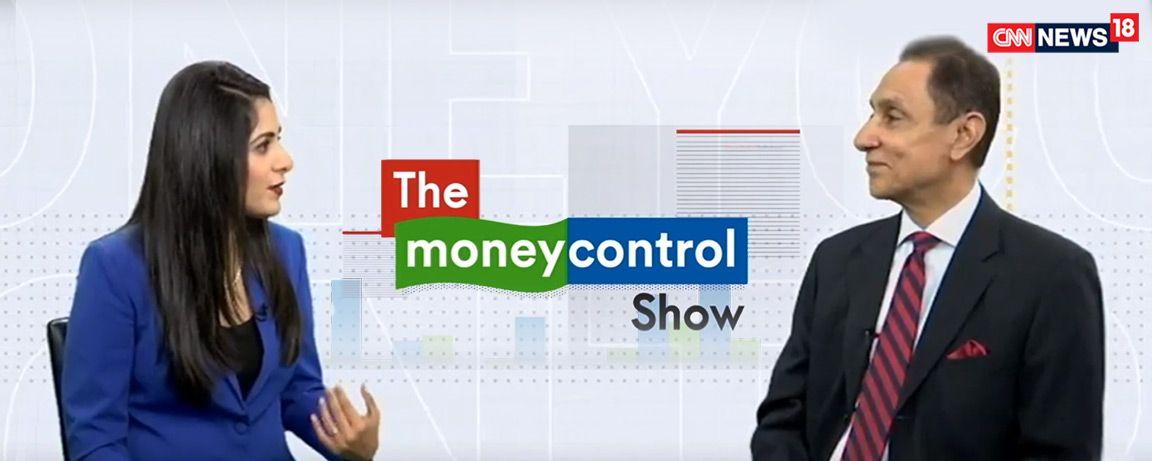The Moneycontrol Show| How Repo-Linked Loans Will Impact Borrowers- With Mr Raj Khosla
MyMoneyMantra Founder and Managing Director, Mr. Raj Khosla explains what does linking of floating lending rates to external benchmarks such as repo rate entail for the borrowers in conversation with Sakshi Batra at The Money Control Show which was telecasted on CNNNews18 this Saturday.
Excerpts from the interview:
RBI has mandated all banks to link their retail and MSME floating rates to external benchmark from Oct 1, 2019. The biggest advantage in the current falling interest rate is the faster transmission of rate cut and lowered EMIs for the borrowers. The lending rates will soon move in tandem with the movement of interest rates in the economy.
What does it mean for the borrower? Let’s welcome Mr. Raj Khosla and understand what does the new interest rate regime where rates are linked to external benchmarks mean for the borrowers.
Q. How many banks have actually moved towards the repo-rate loans now? What are interest rates they are offering?
Up until April 1, earlier this year, the Reserve Bank of India was pushing all banks to link their lending rates to external benchmarks. It’s only after yesterday’s announcement the Reserve Bank has mandated all banks to compulsively link their floating rates to external benchmarks.
And this is great news for the borrowers as more transparency falls for them.
Earlier when RBI was pushing all banks to link lending rates to external benchmarks, only a few PSU banks took the lead in adopting Repo Rate as the external benchmark, that too only after SBI introduced its Repo Rate linked Home Loan product.
Currently, banks like SBI, PNB, BOB, and IDBI all are offering rates in the range of 8.00 to 8.30 percent.
The only foreign bank Citibank has linked their loans with an external benchmark named TBLR (Treasury Bills Lending Rate), and it is offered at 8.5 %.
Q. What is really so special about repo rate loans? Earlier too we had MLCR loans; even those loans were linked to benchmarks?
MCLR is exactly what it sounds like- Marginal Cost Lending Rate. Each bank calculates its own marginal cost and price loans basis the lending cost i.e., + 2 + 3% over the MCLR.
As for External benchmark, it is better for all borrowers. These rates are more transparent. The borrowers will know why the rates are moving, when they are moving and how much they are moving. Earlier there was a poised opaqueness in the setting up of MCLR of each bank. Nobody knew how banks were calculating their MCLR.
Also, you must know repo rate is only one external benchmark which RBI lays out, but banks are free to choose other external benchmarks, as Citibank is using TBLR.
Q. Someday interest rates would also go up. How should borrowers safeguard themselves against a consistent hike in interest as and when they happen?
Well, when prices of vegetables go up you have to pay high. You cannot say I am not going to pay that. However, there are some safeguards that can help you better deal with escalated prices.
The borrowers should following a safe approach:
- If there is a substantial difference, the borrower must switch to the loan of a bank offering a lower interest rate.
- Secondly, try to switch to the bank that lets you link loan to an overdraft facility. With Home Loan overdraft facility, you can put money in overdraft and reduce the interest rate.
In life, one tends to get all kinds of surprises. You are best advised to link your home loan to OD and make a decision to reduce the interest cost and loan tenor as variable home loans do not attract any prepayment penalty.
Q. So in repo rate loans, if your interest rate goes down, it could also go up when the repo rate- or any other benchmark- goes up, right?
Absolutely Yes! The rates can go up but consumers will know and there is more transparency. The rate of interest will move upward/ downward with the repo rate. Earlier, you never knew how banks were calculating the rate.
Q. What should existing borrowers do? Those of us, who already have a housing loan and are paying our EMIs– should we switch or it will be mandatory to follow?
Well, it is better to let the dust settle. And decide only if the rates are low. Wait till Oct 1 I would say and not take a decision to switch in haste. Switching should be adopted only if there is an immediate and substantial gain on account of lower rate of interest.
Q. Earlier it was decided repo rate loans would alter either interest or principal components in such a way that their EMIs don’t change too frequently. Is that still the case with the existing options we’ve seen so far?
Well, if there is a reasonably substantial difference or small variation, there is no point in changing calculations. The rate change will also depend on factors such as if banks are changing quarterly, monthly etc. There is a bit of play involved here. So, it is entirely a borrower’s prerogative to figure out if he wants to alter the EMI or alter the loan tenure.
Q. Repo rate has considerably reduced over 1% and the benefit is not passed on to the borrowers. But the loan rates offered by banks are not below 8.30- 8.50 %. Will this gap be reduced from Oct 1?
No, the gap will not be reduced to this level. However, the borrower will always know why this gap is there. You will always know what this difference is for as there is transparency involved. With MCLR based rates, you never knew and there was opaqueness. So the new regime is in the best interest of the customers.
